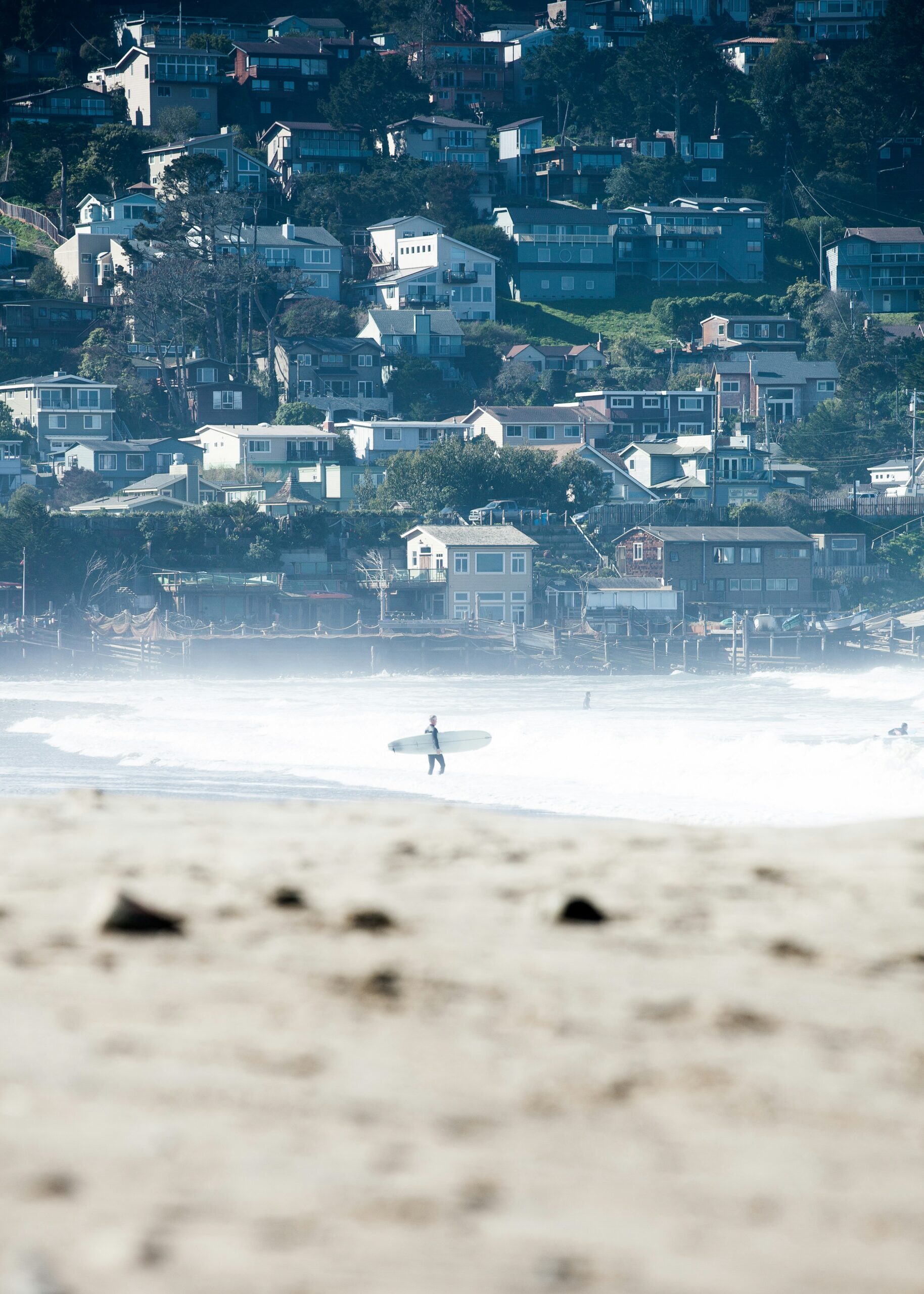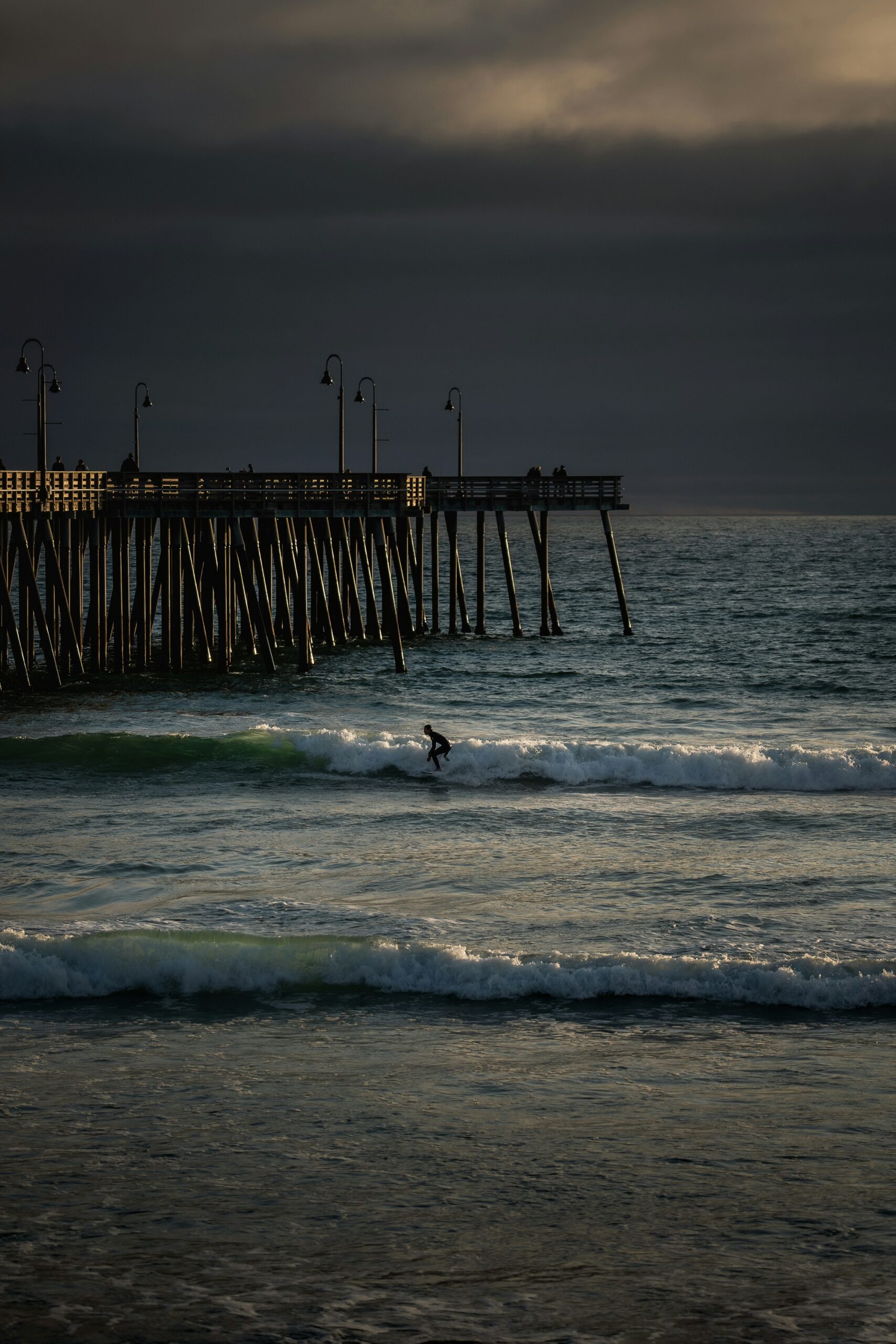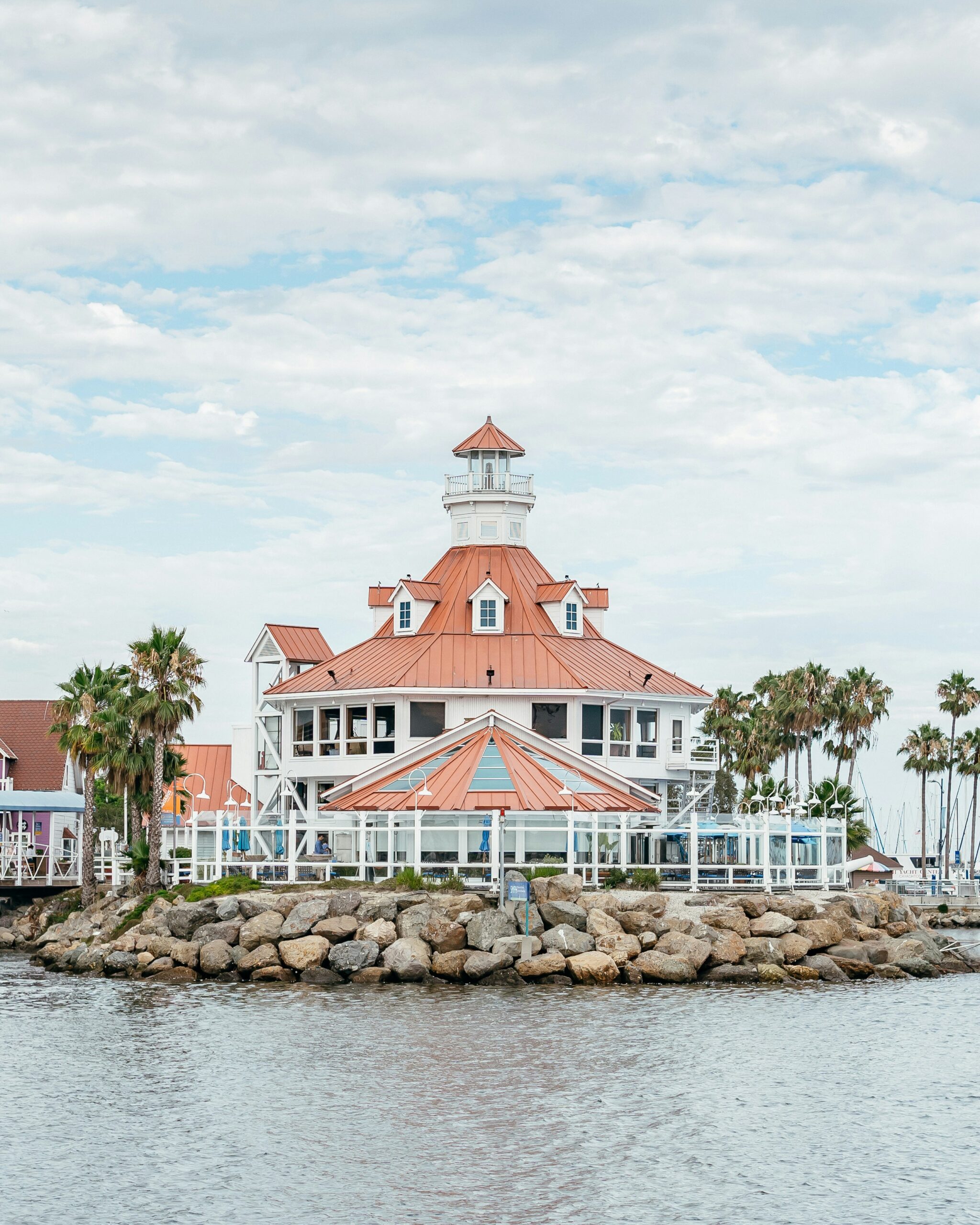Surf’s Up! Discover The Top 7 California Surfing Spots for Every Surfer’s Dream
California consistently ranks among the world’s top destinations for surfing, thanks to its varied coastline and legendary breaks that attract surfers of every skill level. The state is home to a mix of iconic point breaks, beach breaks, and reef breaks, making it a haven for anyone seeking a memorable surfing adventure. From gentle waves tailored for beginners to powerful swells that challenge even the most experienced pros, there’s no shortage of premier spots to explore.

Surfers travel from around the globe to ride the best surf spots in California and soak up its rich surf culture. Places like Malibu, Huntington Beach, and Mavericks have earned their reputation as must-visit locations for anyone passionate about catching the perfect wave. Each spot provides a different experience, with some renowned for historical significance and others for their consistent conditions or thrilling challenges.
Whether planning a dedicated road trip or just looking to discover a new favorite break, exploring the top surfing destinations along California’s coastline offers an unbeatable blend of adventure and variety. Discovering the standout locations can set the stage for an unforgettable session on the water and help every surfer make the most of their time on the Pacific.
Surf’s Up! Discover The Top 7 California Surfing Spots for Every Surfer’s Dream
Why California Is a Surfer’s Paradise
California attracts surfers from around the world with its long stretch of Pacific coastline, consistent waves, and deep-rooted surf history. From legendary surf towns to specialized surf schools, the state’s distinct surf culture offers experiences for every skill level.
The Evolution of Surfing Culture
Surfing in California began gaining momentum in the early 20th century, influenced by pioneers like Duke Kahanamoku. Over the decades, surf culture spread up and down the Pacific Coast Highway, leaving a lasting mark on local communities.
Museums such as the California Surf Museum preserve this heritage, displaying vintage boards and documenting historic moments. Local legends and global surf competitions have made surfing not just a pastime, but a respected lifestyle in many beach towns.
The fusion of music, fashion, and film with surf culture helped shape California’s laid-back vibe. Surf shops and classic diners became social hubs for board riders, and the culture continues to evolve while maintaining strong roots in its traditions.
Unique Surf Conditions on the California Coast
The California coast features a wide variety of breaks thanks to its combination of rocky points, sandy beaches, and river mouths. These conditions provide everything from gentle rollers for beginners to challenging, hollow waves for experts.
Key areas like Malibu, Huntington Beach, and Mavericks offer signature wave types—point breaks, beach breaks, and even massive big wave spots. Surfing in California benefits from reliable swells, especially in summer when south swells roll in from the Pacific Ocean.
The average water temperature and local winds vary, creating different surf experiences along the stretch from San Diego to Northern California. Consistent waves across the state’s coastline mean that surfers rarely have to travel far to catch great conditions.
Surfing Communities and Local Amenities
California’s surf towns each offer their own character, from the creative vibe in Santa Cruz to the classic surfer’s lifestyle of Encinitas. These communities support a strong surf scene with surf shops, board rentals, and professional surf schools.
Access to surfing gear and expert instruction is easy in most areas, making the sport accessible to new surfers. Local cafes, healthy eateries, and beachside amenities create a welcoming environment for both visitors and residents.
Convenient parking, showers, and lifeguard stations are common at major surf beaches, offering added safety and comfort. Whether someone is searching for an iconic break or a quiet cove, the amenities and strong community spirit make the California coast a valued destination for surfers.

Top 7 Surfing Spots in California Every Surfer Must Ride
California offers world-famous surf spots combining powerful waves, distinct surf culture, and unique challenges for surfers of all skill levels. The coastline hosts iconic locations known for their left and right-hand breaks, energetic crowds, and legendary competitions.
Mavericks: California’s Giant Waves
Mavericks near Half Moon Bay stands out as one of the most challenging surf spots in California. This break is renowned for its massive waves that frequently reach over 25 feet during winter swells, attracting only the most experienced surfers.
Located about two miles offshore, the reef creates dramatic, powerful breaks. Surfers here must navigate cold waters, shifting currents, and the real risk of wipeouts. The lineup is tight, and the crowd is often made up of professionals or seasoned big-wave hunters.
Mavericks is also home to some of the heaviest drops found anywhere and only comes alive under the right combination of swell, wind, and tide. Safety measures are essential, as the power and size of the waves can be unforgiving. For anyone seeking the ultimate big-wave experience, Mavericks is a premier destination in California surfing.
Quick Facts Table
| Location | Level | Wave Height | Surfboards |
|---|---|---|---|
| Half Moon Bay | Experienced only | 20-60 feet (seasonal) | Gun, Big Wave Boards |
Steamer Lane and Pleasure Point: The Santa Cruz Experience
Santa Cruz is a surfing haven with storied locations like Steamer Lane and Pleasure Point. These breaks represent the soul of Santa Cruz surfing, famed for their consistent waves and variety of conditions.
Steamer Lane features several take-off zones, allowing both shortboarders and longboarders to find their preferred line. The powerful right-hand point break offers sections for carving and high performance. Pleasure Point, a little south, is popular with a more relaxed vibe and accommodates varying skill levels, making it welcoming for newer surfers as well as veterans.
Both spots can get crowded, but with strong local culture and friendly competition. Winter swells provide the best waves, while the surrounding cliffs and boardwalk highlight the history and energy of Santa Cruz surf spots.
Key Highlights
- Consistent right-hand waves
- Spectacular views and vibrant local scene
- Good mix of both beginner and advanced surfers
Malibu and Surfrider Beach: The Heart of Surf Culture
Malibu, especially Surfrider Beach, sits at the heart of California’s surfing culture. The iconic right-hand point break is famous for its long, peeling waves that are perfect for longboarders.
This spot played a major role in shaping modern surf culture, with roots stretching back to the 1950s and 1960s. Crowds can be intense, especially in summer, but the mellow, rolling waves are ideal for practicing classic surf maneuvers and noserides.
Surfrider Beach consists of three main take-off points, often producing some of the best surfable waves in southern California. The gentle sand-bottom break and scenic coastline continue to attract legendary surfers, newcomers, and fans of surf history alike.
Quick Tips
- Bring a longboard for classic Malibu conditions.
- Arrive early to beat the crowds.
- Enjoy the unique atmosphere blending history and modern surf style.
Huntington Beach and Pier: Surf City USA
Huntington Beach, also called Surf City USA, is one of the most recognized surfing destinations in the world. Its consistent beach breaks and iconic pier make it a hotspot for surfers year-round.
The Huntington Beach Pier divides the lineup, offering both left and right-handers. The area is known for its punchy, reliable waves, making it suitable for all skill levels, though it tends to draw large, enthusiastic crowds. The city hosts the US Open of Surfing annually, further solidifying its status as a centerpiece of American surf culture.
Surfboards of all types can be seen here—from high-performance shortboards to classic longboards—reflecting the diverse community that gathers on the sand and in the waves. Huntington Beach remains a must-surf spot, offering access to year-round swell, well-maintained facilities, and a vibrant, welcoming surf scene.

Surf Spots for All Skill Levels Along the Coast
California’s coastline offers a broad range of surf breaks for every skill level, from mellow waters ideal for beginners to challenging point breaks favored by professionals. Choosing the right break can make a significant difference in progression, safety, and overall enjoyment.
Spots for Beginner Surfers
Beginner surfers thrive in areas with gentle, slow-moving waves and sandy bottoms, which enhance safety and make learning easier. La Jolla Shores in San Diego is one of the state’s most popular entry-level beaches, known for its soft-breaking waves and a vibrant surf school scene. Numerous surf lessons are offered here year-round, and the mellow conditions mean beginners can focus on fundamentals without feeling overwhelmed.
San Onofre State Beach is also highly recommended for beginners. Its wide beach offers several mellow peaks and long rides that are forgiving for those learning how to paddle and balance.
Pacific Beach near San Diego provides a friendly lineup with plenty of rental shops nearby, making it easy for newcomers to find convenient equipment and instruction.
Key beginner spots often include:
- Sandy ocean floor for safe wipeouts
- Consistent, manageable wave height (2-4 feet)
- Professional surf schools and lifeguard presence
Essential Breaks for Intermediate Surfers
Surfers with some experience can progress to beaches with faster waves and more varied conditions. Ocean Beach (San Diego) is often chosen by intermediates looking for both challenge and accessibility—sandbars create waves ideal for practicing maneuvers, and crowd levels are usually moderate outside of peak hours.
Newport Beach in Orange County features consistent surf and a lively scene, especially near the piers. The south side of the pier can offer peaky waves that help intermediates improve timing and carving.
In Encinitas, Swami’s is a classic right point break known for reliable winter swells. While it attracts experienced surfers, there are many days when intermediates find manageable waves and a long ride to practice their turns.
Windansea Beach has a powerful reputation, but during smaller swells, its reef break is within reach for intermediate surfers looking to step up their game under safer conditions.
Challenges for Advanced and Experienced Surfers
Advanced surfers seek out breaks with powerful waves, fast drops, and the potential for high-performance maneuvers. Black’s Beach (often just “Blacks Beach”) in San Diego is famous for its big, powerful waves and challenging paddle-out. Steep cliffs create unique wind conditions, and the break regularly hosts skilled locals and traveling pros.
Lower Trestles near San Clemente is a world-renowned performance wave and a regular host for the WSL Finals. Surfers like Kolohe Andino frequent this spot for its reliably rippable walls and rapid sections suitable for aerials and critical turns.
For those hunting for iconic waves, these breaks demand experience, knowledge of ocean conditions, and respect for local etiquette.
Table: Advanced Breaks Overview
| Spot | Main Features | Notes |
|---|---|---|
| Black’s | Big, hollow waves, strong currents | Suitable for experts |
| Lower Trestles | Long, high-quality rides, peeling walls | WSL contest venue |
Hidden Gems and Less Crowded Options
Some of California’s best sessions happen away from the crowds at lesser-known beaches. On the Central Coast, Moonstone Beach in Cambria provides scenic beauty and mellow waves that attract locals seeking solitude. It’s suitable for intermediates on calm days and offers glassy conditions in winter.
Asilomar State Beach in Pacific Grove is another standout, offering a mix of rights and lefts on a rocky, kelp-lined point. The surf is less consistent than SoCal beaches but rewards patience with uncrowded lineups and beautiful surroundings.
Pismo Beach Pier offers various peaks for all levels. It’s less packed than many spots farther south but can get good swells from autumn through spring.
Hidden gems often appeal to surfers who value tranquility, more space on the waves, and a unique connection to California’s less developed coastlines. Discovering these spots often requires local knowledge and flexibility depending on swell and weather.

Planning Your Ultimate California Surf Trip
Surfing in California requires more than just picking a spot. Preparation, timing, and understanding local support will help travelers make the most of their wave-chasing adventure.
Top Tips for a Successful Surfing Adventure
Careful planning is key for anyone hoping to enjoy California’s famous waves. Surf travelers should start by researching the type of waves and conditions each spot is known for; some areas cater to beginners with mellow breaks, while others offer challenging reef or point waves suited for experienced surfers.
Packing the right surfing gear is essential. Essentials include a reliable surfboard, multiple leashes, and wetsuits of appropriate thickness depending on the water temperature. Sunscreen, a rash guard, and repair kits are also a must. Safetycomes first: understanding riptide management, bringing a basic first aid kit, and checking local rules can prevent accidents.
Crowds are common at popular spots. Surfing early in the morning or on weekday afternoons helps to avoid the busiest times. Respect local etiquette, give right of way to those already on the wave, and avoid dropping in on fellow surfers.
Seasonal Conditions and Best Times to Surf
California’s surf conditions change with the seasons. Summer swells typically hit Southern California, bringing consistent, manageable waves to beaches like Huntington or Malibu. These months are ideal for new surfers learning to read the ocean while enjoying warmer water.
In contrast, winter delivers powerful northwest swells especially along Central and Northern California. Advanced surfers head to places like Mavericks for big wave action, while some sheltered breaks provide protection for less experienced riders.
Water temperature varies widely. A 3/2mm wetsuit usually suffices from late spring through early fall south of Santa Barbara, while thicker suits are needed up north or in winter. Checking surf forecasts daily ensures travelers stay ahead of sudden changes in wave size and wind direction.
Access, Amenities, and Local Surf Support
Easy accessibility and reliable amenities make certain surf locations stand out. Many top spots, such as Malibu and Santa Cruz, offer ample parking, showers, and restrooms close to the beach. A quick glance at the surf trip guide for California confirms that planning ahead for parking, especially during weekends, is crucial.
Surf shops and rental services are widely available in most coastal towns. They provide gear rentals, repairs, and local guidance. Communities like San Clemente and Encinitas feature surf schools, group lessons, and lifeguards on duty—valuable support for both beginners and traveling surfers. Staying near a town with a surf scene helps with logistics and creates opportunities to tap into California’s unique surf culture.







